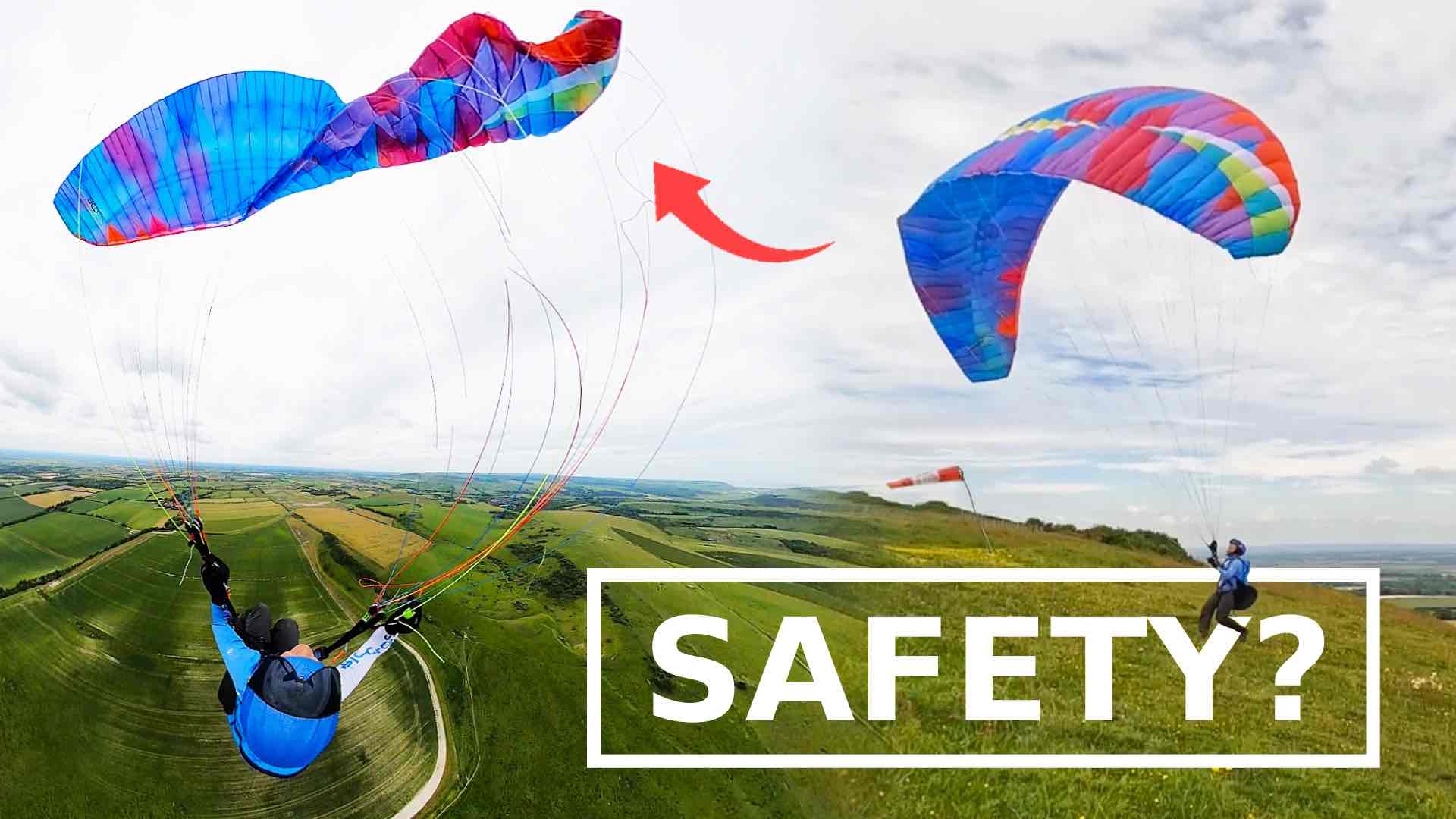
The BGD MAGIC 2 is, in our opinion, a well-rounded first wing—stable, confidence-inspiring, and exceptionally easy to launch. It has a slight tendency to drop back, so lifting the glider is required, but it’s forgiving and smooth on the pull-up, making it ideal for beginners. Once airborne, the MAGIC 2 is easy to control and ground-handle, and it’s playful rather than feeling static. It’s enjoyable to fly, offering a reassuring, solid nature while remaining lively and responsive.
As an A-Class glider, it’s not as agile as a freestyle glider, but its handling is more refined and responsive than many other A-Class and even some low-B gliders. The stall point is predictably safe but accessible with a half-wrap, offering a nice balance of stability and playfulness. In flight, it feels collapse-resistant and solid without overly soft wingtips, which is sometimes a characteristic of BGD wings. It provides good feedback in a way that’s stable rather than overly soft.
In the air
Windy conditions offered a good test of the glider's performance, and it showed no problems penetrating the wind, even when flown at around 90 kg within its weight range (75–95 kg). The glide and overall performance feel very good for the class, comparable to low-B gliders and perhaps even better than some, with high passive safety. In flight, the MAGIC 2 remains forgiving and playful, making it a good choice for pilots who want something safe but also engaging to fly.
Compared to other A-Class wings, the MAGIC 2 offers a nimble and enjoyable handling experience. While BGD’s Adam 2 is more pitch-stable and less agile, making it ideal for new pilots or those prioritizing stability, the MAGIC 2 is a step up for those who value handling while still being in the safe A-Class category.
Performance and Safety
In terms of safety testing, the MAGIC 2 performed well under induced collapses. Even with strong inputs, it showed minimal turn and quickly re-inflated without excessive pitch or dive. During frontals, it recovered quickly with little pitch, not requiring precise pilot intervention to remain stable. When large pitching movements were induced, the glider consistently self-corrected before risking a frontal collapse, indicating high stability.
Overall, we are very impressed with the MAGIC 2 and highly recommend it as a first wing. Many pilots mistakenly believe that A-Class gliders are boring or that they’ll outgrow them quickly, but modern A-Class gliders like this one are far more enjoyable and capable than in the past. Thermal and cross-country flights are easily achievable on this wing. In fact, it’s wise to start with an A-Class glider like the MAGIC 2 and master its performance fully before moving up.
Durability and handling
If a pilot is exceptionally skilled at kiting and wing control, a low-B glider might be a consideration, but only if they are fully confident in handling it. Paragliding success hinges on matching the glider to the skill level, and beginners who choose safer wings often progress faster because they can focus on learning to fly rather than managing an overly demanding glider.
The MAGIC 2 is also well-suited for ground-handling practice, takeoffs, and landings, which are often the most challenging parts of paragliding. With its forgiving launch characteristics and wind-resistant design, the MAGIC 2 is easy to manage in stronger winds, unlike some A-Class gliders that need to be held down. Its slightly slower rise on launch gives more time to adjust, and if needed, a bit more pressure on the riser will bring it up smoothly.
The wing’s construction emphasizes durability, with fully sheathed lines (except for the upper cascades) and each line type in a different color for easy identification. The snaplock magnets are convenient, allowing for easy one-handed operation, and the speed system works smoothly with durable nylon pulleys. Although not heavy, the MAGIC 2 is built to last, making it a reliable choice for new pilots.
Final Thoughts
In conclusion, we would happily recommend the MAGIC 2 to any beginner. For those who prefer a bit of criticism, the only possible downside is that on launch, it is essential to ensure the glider is lifted enough, or it might drop back if the brakes are touched too early. However, for an A-Class glider, this minor tendency is actually beneficial, providing control without requiring excessive restraint. All in all, the MAGIC 2 offers excellent behavior and reliability, making it a fantastic choice for beginner pilots seeking both safety and enjoyment.
Flybubble video review
Brought to you by Flybubble
Like what we do? The best way to thank and support us is to buy gear from us and recommend us to others
